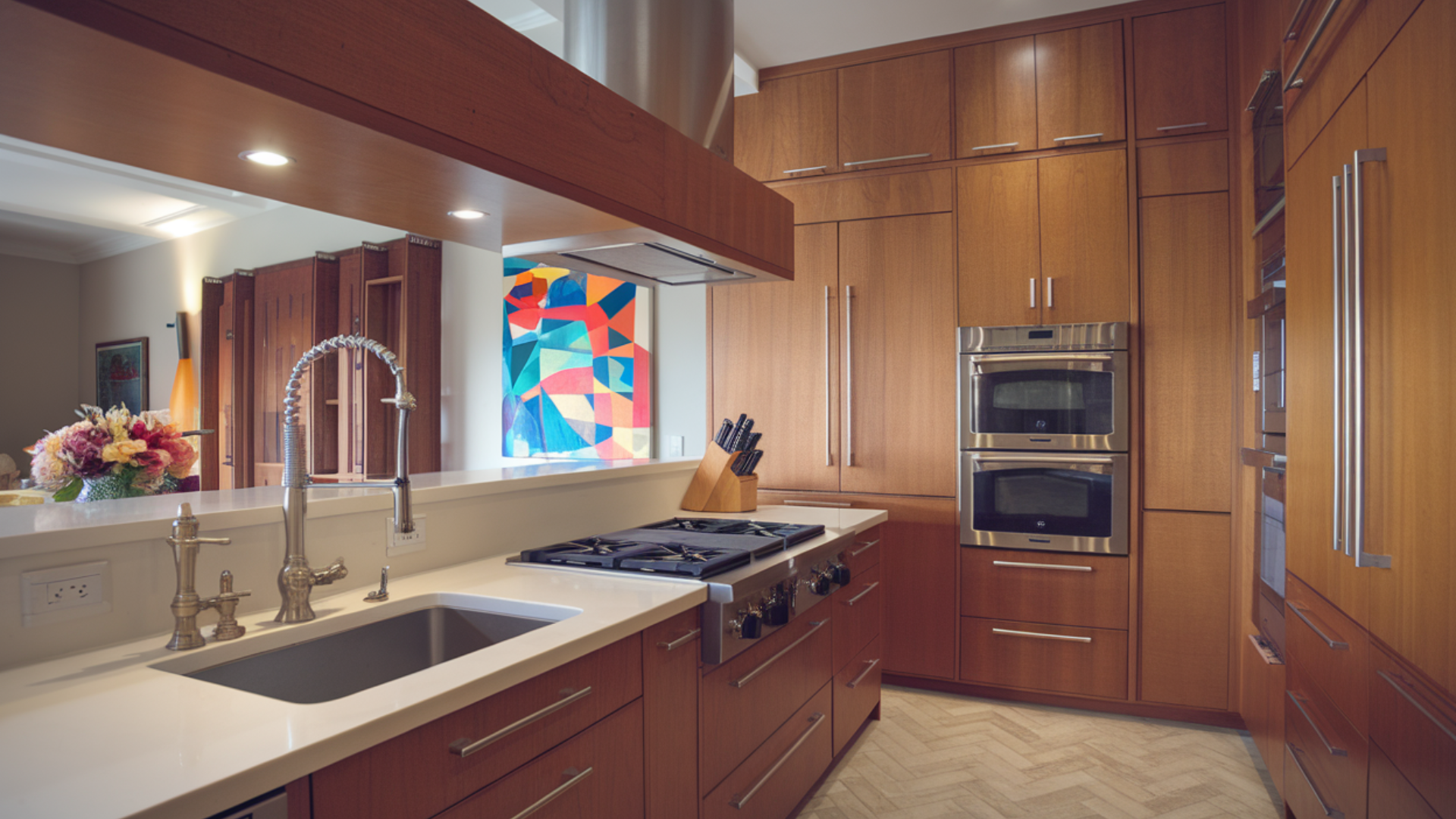If you’re looking for a beautiful, strong, and reliable wood for your next project, sapele wood might be just what you need.
This tropical hardwood is loved for its rich reddish-brown color and smooth, wavy grain. It’s often compared to mahogany because of its classy look and strong build.
Whether you’re making furniture, building cabinets, or crafting a guitar, sapele is a great choice.
It’s also a bit more affordable than other exotic woods, which makes it a popular pick for woodworkers and homeowners alike.
In this guide, I’ll walk you through everything you need to know about sapele wood, where it comes from, what it looks like, how to use it, and how to care for it.
So, if you’re curious about this unique wood, keep reading to find out if sapele is right for your next project.
Where Does Sapele Wood Come From?
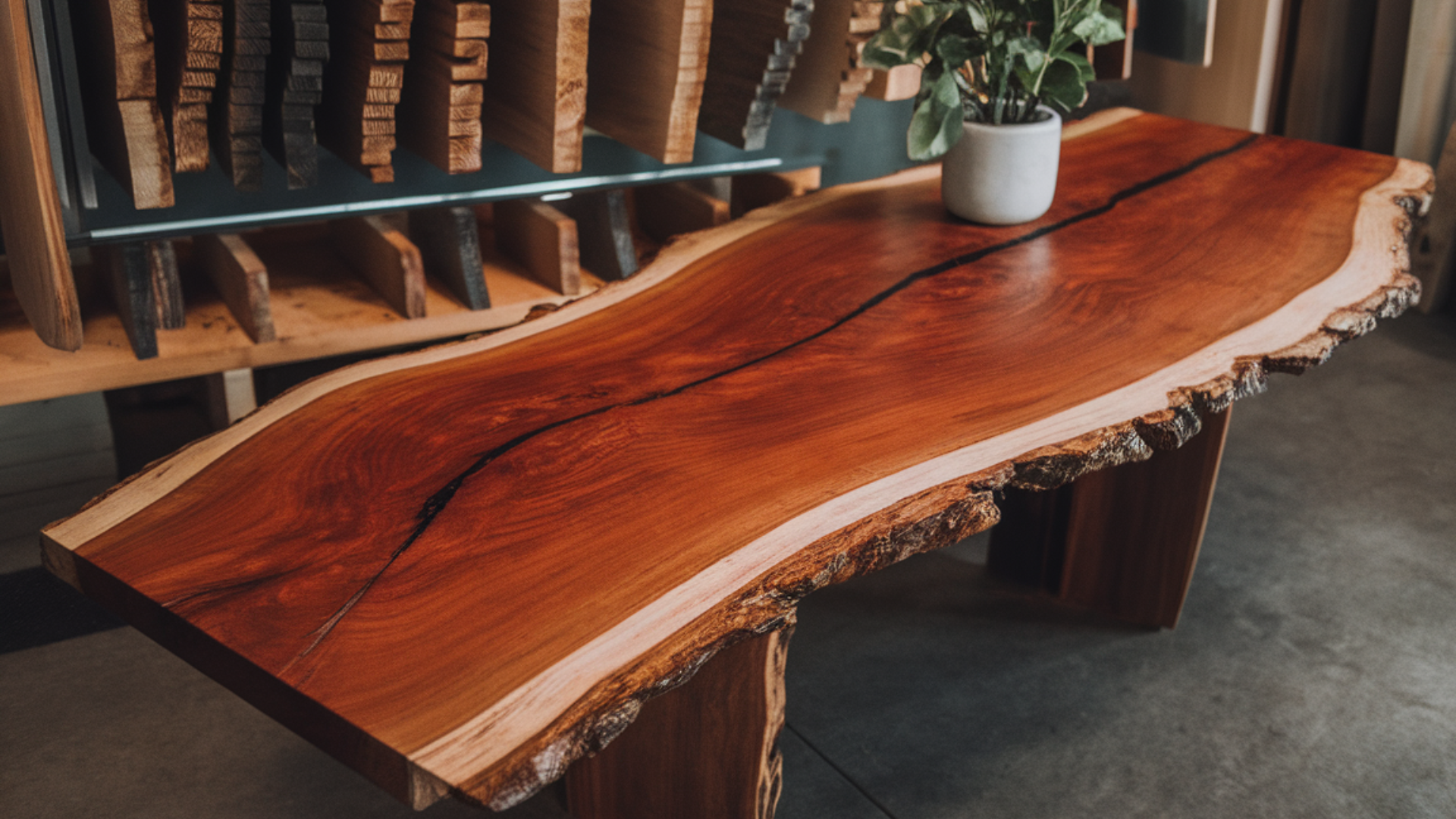
Sapele wood is a strong and beautiful hardwood that comes from a large tree found in Africa. It’s known for its deep reddish-brown color and smooth, wavy grain.
Many people like to use it because it looks a lot like mahogany but usually costs less.
Sapele is often used to make fine furniture, doors, floors, and even musical instruments like guitars.
It’s strong, long-lasting, and looks fancy without being too expensive. That’s why it’s a favorite for both beginners and experts in woodworking.
Sapele wood comes from the sapele tree, which grows in tropical parts of Africa. Countries like Nigeria, Ghana, and the Ivory Coast are known for having lots of these trees.
The trees grow tall and straight, which makes it easier to get long, strong boards. Sapele is harvested and shipped all over the world for many different uses.
Characteristics of Sapele Wood
Sapele wood has a lot of features that make it a great choice for many different projects. From its rich color to its tough strength, there’s a lot to love about this wood.
- Color and Appearance: Sapele wood has a rich reddish-brown color that gets even darker and warmer over time. Its grain can look straight, wavy, or even have fun patterns like ribbon stripes or swirls.
- Strength and Hardness: Sapele is a hard and dense wood. It’s stronger than many other common hardwoods, which means it holds up well to wear and tear. It’s perfect for things like flooring and furniture that get used a lot.
- Texture and Grain: This wood has a fine, even texture that feels smooth when sanded. The grain can be a little tricky because it often changes direction. That’s why it’s important to use sharp tools when working with it.
- Workability: Sapele is pretty easy to work with, especially if you have the right tools. You can saw, sand, and finish it without much trouble. However, because the grain can be twisty, you might need to go a bit slower to avoid rough spots.
- Durability: Sapele is naturally resistant to rot and insects, making it a smart pick for both indoor and outdoor use. With the right care, it can last for many years.
- Natural Shine: One of the best things about sapele is its natural shine. Even without a finish, it looks smooth and classy. When you add a clear coat or oil, it really brings out the color and patterns.
Common Uses of Sapele Wood
Sapele wood is one of my favorite choices because of its beauty, strength, and versatility. I’ve used it for furniture and smaller, detailed projects, it handles both really well.
This hardwood is easy to work with, and when taken proper care of, it lasts a long time and keeps looking great.
1. Furniture and Cabinetry
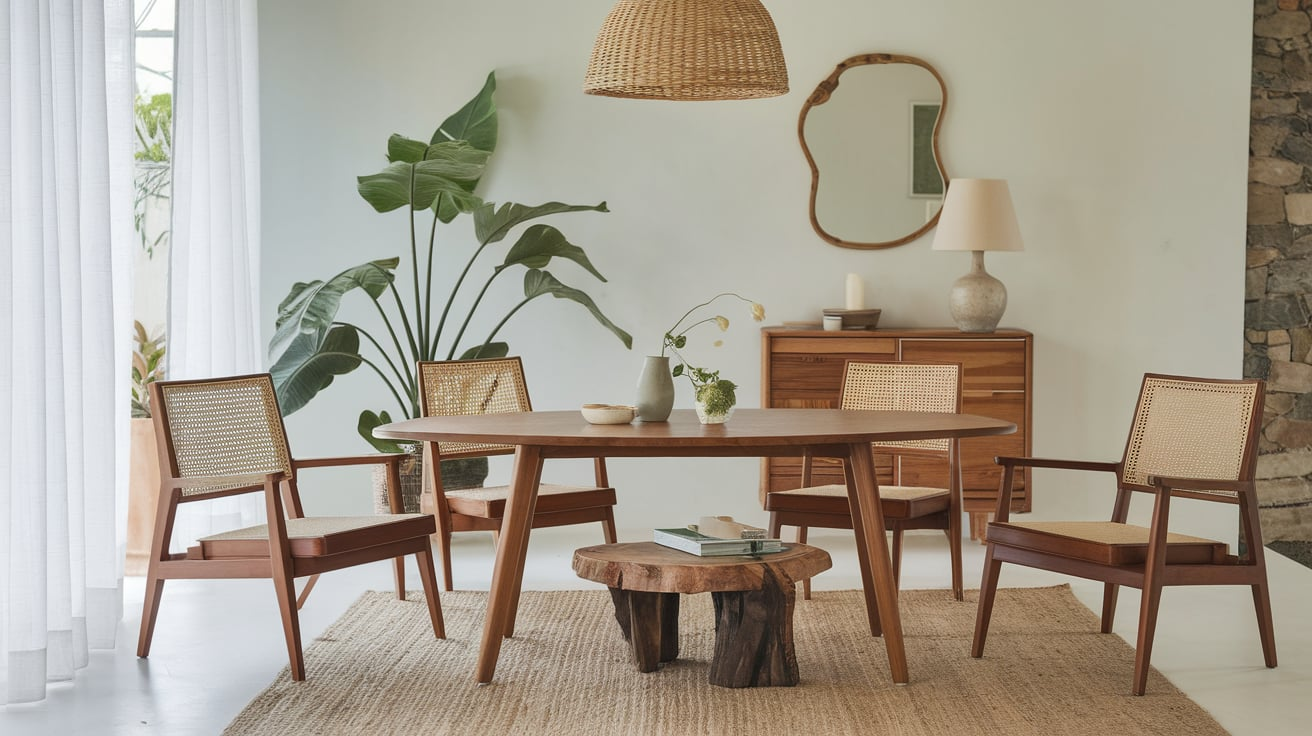
Sapele is a go-to wood for making high-end furniture like tables, chairs, and dressers. Its rich, reddish-brown color and smooth grain give furniture a classic, elegant look.
It’s also a great choice for kitchen and bathroom cabinets. Since it resists changes in humidity better than some other woods, it won’t easily warp or crack in damp spaces.
2. Musical Instruments
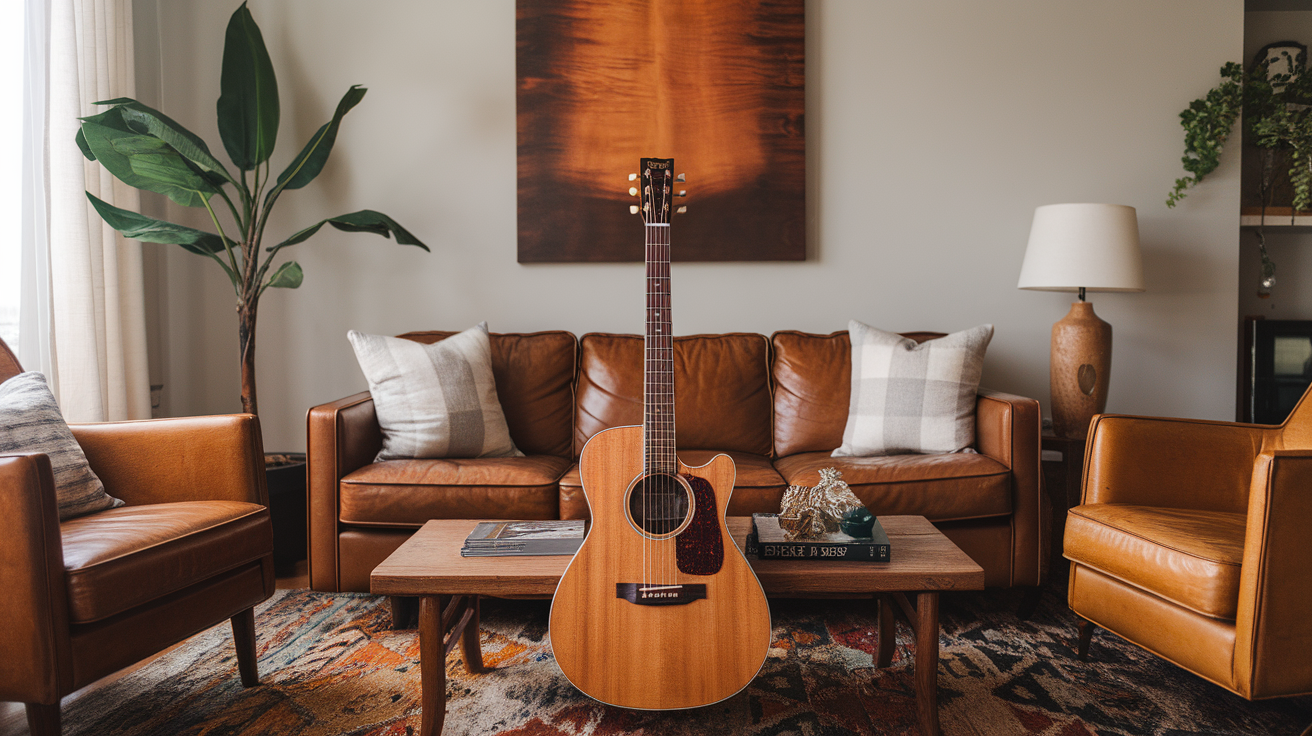
Sapele is often used in acoustic guitars, especially for the back and sides. It creates a clear, bright sound that’s similar to mahogany but with a bit more sharpness.
It’s also used in drums, ukuleles, and other instruments, both for its tone and attractive appearance.
3. Doors and Window Frames
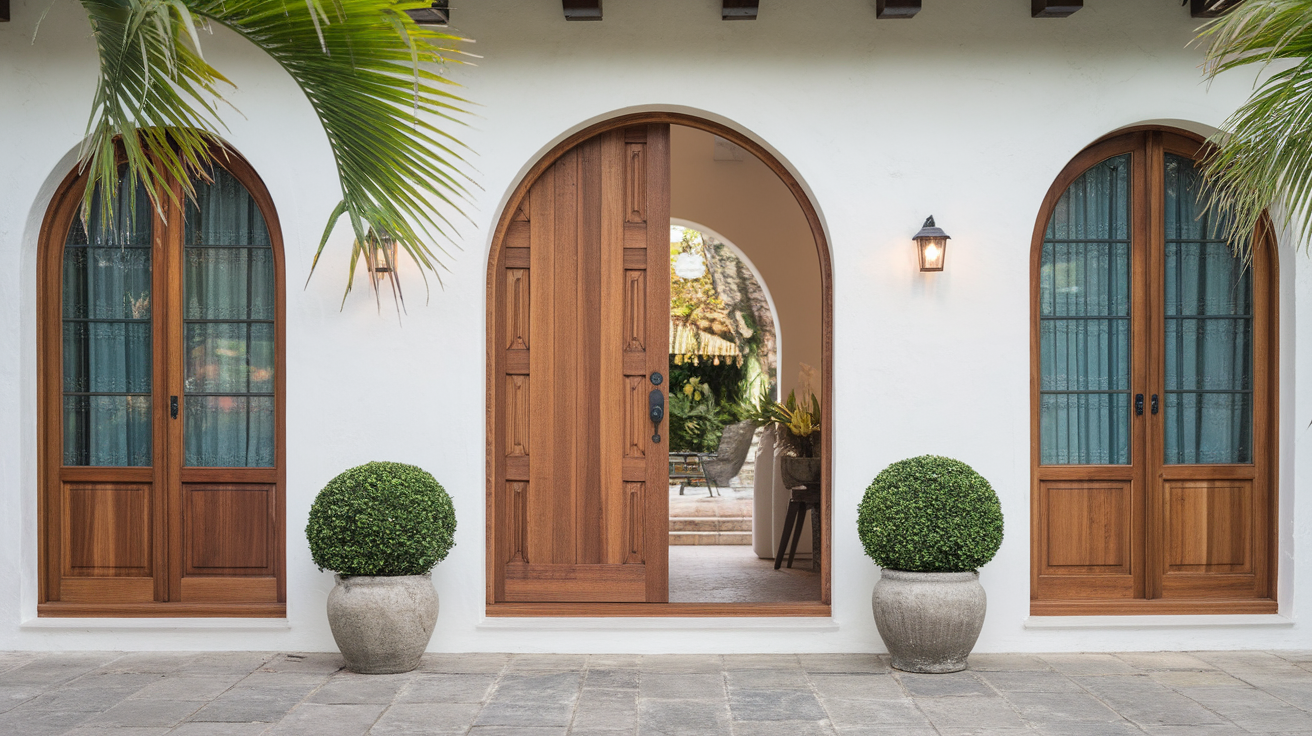
Thanks to its strength and resistance to moisture, sapele is often used for doors and windows. It works well for front doors that need to be both tough and stylish.
Interior doors and window frames made from sapele are also popular, especially when homeowners want a wood that adds warmth and character.
4. Flooring and Paneling
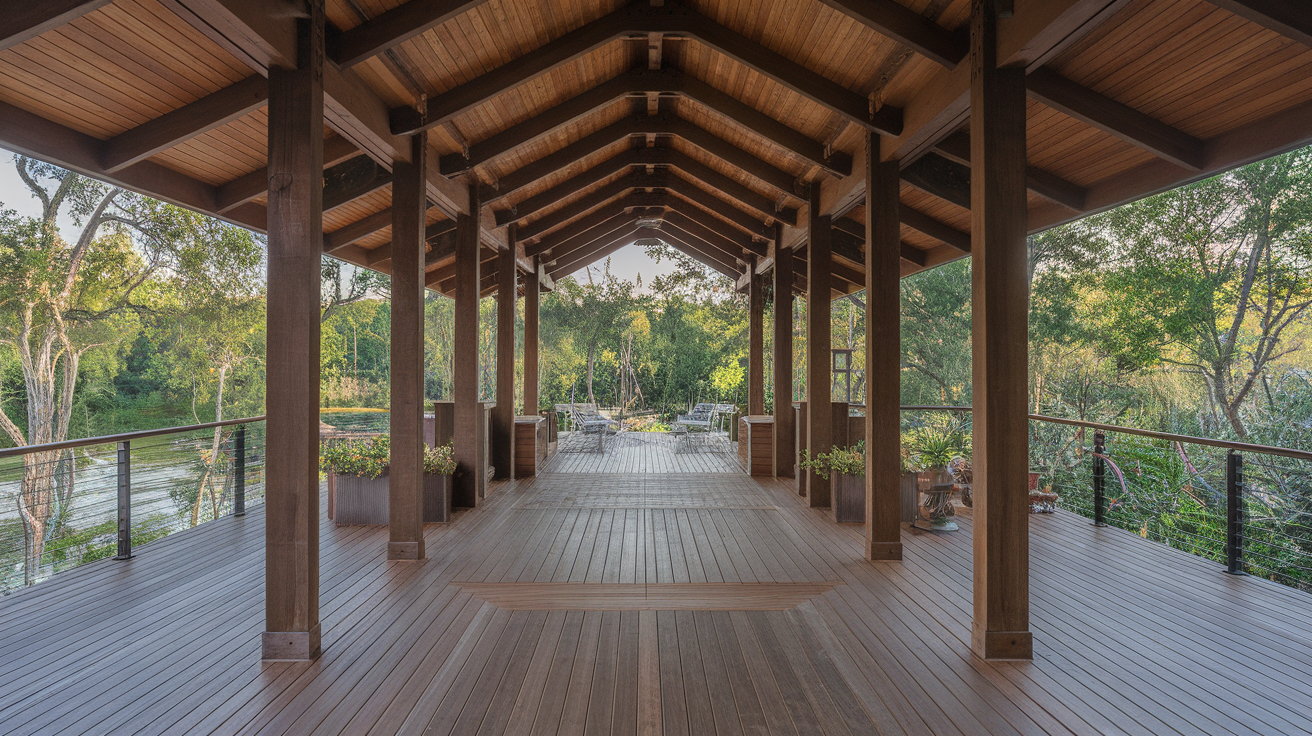
Sapele is tough enough for hardwood flooring, especially in high-traffic areas. It holds up well under daily use and adds a rich color to any room.
It’s also used for wall paneling and decorative trim, giving homes a warm and finished look.
Its durability and smooth finish make it a favorite for homeowners wanting both style and strength.
Sapele’s mix of beauty and durability makes it a smart choice for a wide range of projects. Whether indoors or out, it brings lasting style and strength.
Sapele Wood: Sustainability, Cost, and Care Guide
Sapele wood isn’t just known for its beauty and strength, it’s also important to think about how it affects the environment, how much it costs, and how to keep it looking good for years.
Understanding these extra details will help you decide if sapele is the right wood for your project.
| Category | Details |
|---|---|
| Sustainability | Listed as “Vulnerable” due to overharvesting. Choose FSC-certified sources for responsible use. |
| Pricing | Mid-range in cost. Less expensive than genuine mahogany, but more than pine or oak. |
| Availability | Easy to find in lumberyards and online. Sold as solid wood and veneer. |
| Care & Maintenance | Dust regularly and wipe with a damp cloth. Reapply the finish every few years to protect the wood. |
| Outdoor Use | It can be used outdoors if sealed properly. Ideal for doors, trim, and garden furniture. |
| Workability | Easy to work with, but may need sharp tools due to interlocked grain. |
Sapele wood offers an excellent mix of beauty, strength, and value.
When sourced responsibly, it’s a smart and stylish choice for woodworking projects, furniture, doors, and more.
Just be sure to care for it properly and buy from trusted suppliers. With the right maintenance, sapele can last for decades and continue looking great along the way.
Pros and Cons of Sapele Wood
Before choosing sapele wood for your project, it’s helpful to weigh the good and the not-so-good.
While this wood is beautiful and durable, it may not be the perfect fit for every need. Here’s a simple list of pros and cons to help you decide.
Pros
- Attractive Appearance: Sapele has a rich, reddish-brown color and beautiful grain patterns like ribbon or wavy stripes. It adds a high-end look to any project.
- Strong and Durable: It’s a hardwood that holds up well over time. It resists wear and tear, making it great for floors, furniture, and doors.
- Works Well Indoors and Outdoors: When properly sealed, sapele can handle moisture and outdoor conditions, which makes it a flexible option.
- Takes Finishes Nicely: You can stain, oil, or coat sapele to bring out its natural beauty or match it with other wood tones.
Cons
- Heavy and Dense: Sapele is heavier than some other woods, which can make it harder to move or work with, especially for beginners.
- Challenging Grain: The interlocked grain may cause tear-out when cutting or sanding. Sharp tools and extra care are needed.
- Mid-Range Price: While it’s cheaper than mahogany, it’s still more expensive than woods like pine, making it less ideal for tight budgets.
- May Darken Over Time: Like many woods, sapele tends to darken with age and light exposure, which might not suit every design preference.
Sapele wood is a great option if you want something that’s strong, stylish, and long-lasting.
Just be ready to take your time during the build and budget a little more than you would for basic wood types.
Is Sapele Wood Right for Your Project?
Sapele wood is a great choice for many types of projects, though it’s not the perfect fit for everyone.
If you’re looking for a hardwood that’s strong, beautiful, and holds up well over time, sapele is a solid option.
It’s especially good for furniture, cabinets, doors, and musical instruments.
Its rich color and smooth grain make it a favorite among woodworkers who want something that looks fancy without spending too much.
I’ve used it a few times when I wanted a polished look without going over budget.
That said, sapele is heavier than some woods and can be tricky to work with if you’re new to woodworking.
The grain can cause tear-out if you’re not using sharp tools. It’s also a bit more expensive than basic woods like pine.
Still, if you’re working on a project that needs both beauty and durability, and you’re ready to take your time, I think sapele wood is definitely worth considering.
Conclusion
Sapele wood is a smart and stylish choice for many woodworking projects.
With its rich color, strong build, and smooth grain, it works well for furniture, doors, musical instruments, and more.
It’s also a solid option for both indoor and outdoor use when finished properly.
While it’s a bit heavier and sometimes tricky to work with due to its grain, the results are often worth the extra effort.
Sapele also offers a more affordable alternative to mahogany without giving up beauty or strength.
Just remember to look for wood from responsible sources to help protect forests and wildlife.
Whether you’re a beginner or a seasoned woodworker, sapele wood can add warmth and quality to your work.
Take care of it with the right finish and regular cleaning, and it will stay beautiful and strong for many years to come.

